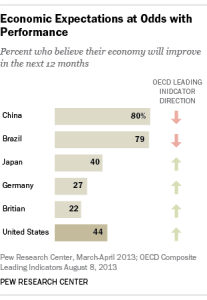

As the number of babies born to unmarried mothers has risen, so has interest from government officials in persuading unmarried fathers to sign a paternity acknowledgement form that gets their name added to the birth certificate. It’s standard practice now for hospitals to ask those dads to sign–but not everyone does. What makes a difference in who signs?
The child’s sex, for one thing, according to a recent analysis of more than 1.8 million birth certificates in Michigan. The analysis, published in the online journal PLoS One, finds that unmarried men who father sons are more likely to acknowledge paternity than fathers of daughters. The effect was slight—a male baby is 4% more likely to have a father who acknowledges paternity, relative to a female baby—but statistically significant.
The report by researchers Douglas Almond of Columbia University and Maya Rossin-Slater of the University of California, Santa Barbara arrived at this conclusion via a regression analysis that accounted for various demographic characteristics of the mothers. It falls in line with previous research about son preferences in the U.S. For example, women who have only daughters are less likely to be married than women with only sons. And when couples have two or more children, they are more likely to want more children if they have all girls than all boys.
Almond and Rossin-Slater had access to every birth record in Michigan from 1993 to 2006. After eliminating about 400 records because of missing data, they divided the rest into three groups: One parent on the birth certificate, two parents on the birth certificate (i.e., married parents) and birth certificates with paternity acknowledged. If parents are married, the father’s name automatically goes on the Michigan birth certificate. Only unmarried parents are offered the paternity acknowledgement form.
As other research has found, Almond and Rossin-Slater also reported that babies born to unmarried parents whose fathers acknowledge paternity have socioeconomic advantages compared with other children of unmarried parents. One example of this is that their mothers are better educated than other unmarried mothers.
The campaign to persuade unmarried fathers to sign on the dotted line ramped up in the mid-1990s after Congress required that states set up simpler options to establish paternity than the typical process of getting a court order. Since then, there has been a striking increase in paternity acknowledgement. According to data in the Michigan study, 26% of births to unmarried mothers in Michigan in 1993 had fathers who acknowledged paternity; by 2006, the share rose to 62%.
Government officials want to increase paternity acknowledgement in part because unmarried mothers are more likely than married mothers to be poor, and paternity acknowledgement can be the basis for enforcing a child support order. Fathers who acknowledge paternity also are more likely to provide voluntary child support, and to be involved in their children’s day-to-day lives. Signing an acknowledgement of paternity also helps unmarried fathers secure visitation rights if they do not live with their children.
Unmarried mothers account for a rising share of all births—41% in 2011 compared with 5% in 1960. Furthermore, the share of fathers who live with their children has fallen significantly in the past half century, according to a recent Pew Research Center report that also examines how much involvement with their children is reported by these non-resident fathers.
